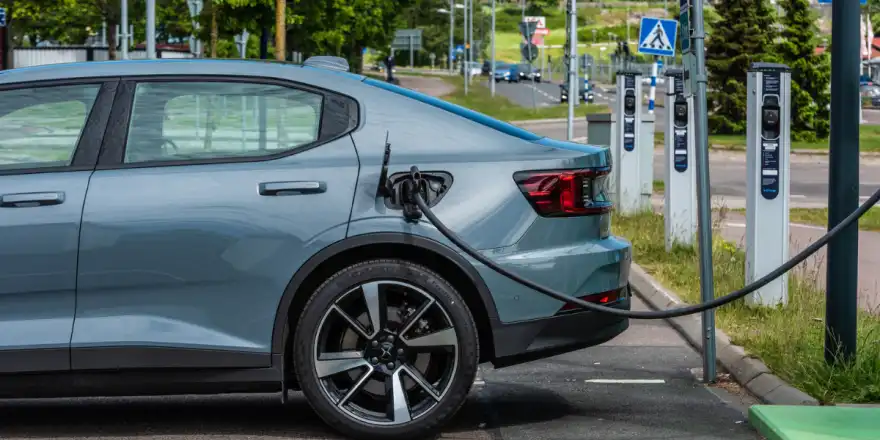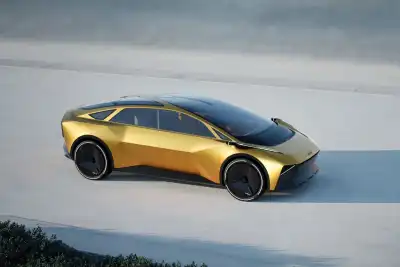
There’s a lot of back and forth online about whether electric cars are actually better for the planet. So, instead of letting the debate rage on, EV brand Polestar decided to lay all its cards on the table.
In its newly released 2024 sustainability report (audited by Deloitte, so it’s legit), Polestar has broken down the carbon footprint of building each of its cars: the Polestar 2 saloon and the Polestar 3 and 4 SUVs.
What they’ve done is super transparent—they’ve measured the carbon emissions from sourcing raw materials, manufacturing, and even shipping their vehicles. And the results? Pretty impressive. Since 2020, they’ve cut the greenhouse gas emissions per car sold by nearly 25%.
How did they pull that off? It started with a deep dive into the production of the original Polestar 2, which had a “cradle-to-factory gate” carbon footprint of 26.1 tonnes of CO2. That means everything from mining materials to getting the car ready to ship. Turns out, most of that carbon came from producing things like steel, aluminium, and batteries.
So, they switched things up—using greener aluminium, sourcing renewable energy for battery production, and powering their plants with clean electricity. The result? The newer Polestar 4 has the lowest carbon footprint of the lot, coming in at 21.4 tonnes. Even the updated Polestar 2 has dropped to 23.1 tonnes.
How Do EVs Stack Up Against Petrol Cars?
Polestar doesn’t make petrol cars, but they teamed up with Volvo to find out how a regular SUV compares. A petrol Volvo XC40 emits 14 tonnes of CO2 just to build—but adds another 44 tonnes from burning petrol over its lifetime. Total? A hefty 58 tonnes of carbon.
An electric Polestar 2, even using the global average mix of electricity sources (not just renewables), would emit about 46 tonnes in total. If it’s charged using wind power? That drops to just 26 tonnes. Big difference.
As Polestar’s head of sustainability, Fredrika Klarén puts it: “The production-related emissions are something that we can get down to net zero, while the use phase emissions of a fossil fuel car can never become net zero.”
So, if you own an EV—or are thinking of getting one—the best thing you can do for the planet is to charge it using renewable electricity whenever possible.
What About the Materials Behind the Scenes?
Beyond just emissions, Polestar is digging into where its materials come from—because things like nickel, cobalt, and lithium don’t exactly appear out of nowhere. They’re making sure their supply chains don’t include things like child labour or unsafe mining practices. Polestar’s now auditing the sources of key materials in its cars, with 51% of suppliers checked for the latest Polestar 4. That’s up from 39% for the Polestar 2.
Even though Polestar builds its cars in China—home to both heavy fossil fuel use and the world’s largest green energy network—they make sure the electricity powering their factories is verified renewable, with proper certification. And with future production expanding to the US, Korea, and Europe, they’re holding those same high standards globally.
Should They Make the Batteries Smaller?
Here’s the thing: the biggest polluter in Polestar’s lineup is the Polestar 3—no shock there. It’s a massive SUV with a giant 111kWh battery. That means more materials, more production emissions, and a bigger environmental impact: 24.9 tonnes of CO2 just to build.
Some carmakers, like Mazda, tried limiting battery size to lower emissions—but found out UK buyers weren’t into it. Still, should Polestar lead the way and start shrinking battery sizes?
Fredrika Klarén says no. "I would like to separate the question of sustainability from size, because that is where we’ve gone wrong in the past, thinking a sustainable product needs to be smaller, more boring, a bit itchy, probably beige!" she told Auto Express.
“There needs to be sustainable products of all shapes and sizes. We need to have electric SUVs being able to replace fossil-fuel ones, because the [voice] of consumers that want an SUV is a relevant cry. With Polestar’s 25 per cent reduction [in emissions per vehicle sold]… we have shown you need to focus on how it was produced rather than if it's just smaller.”
And they’ve got a point. If Polestar can make big EVs with a smaller footprint through smarter production and cleaner energy, that’s a win.


